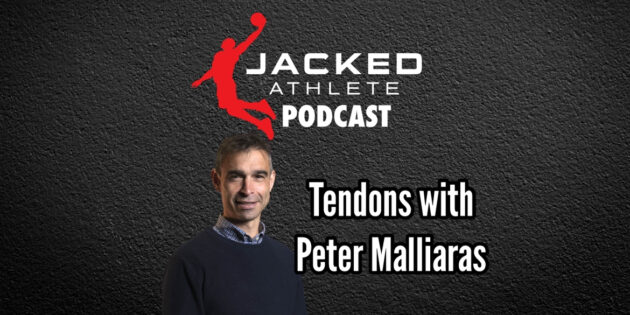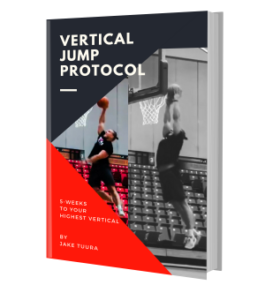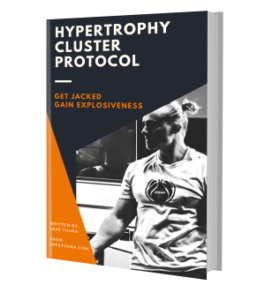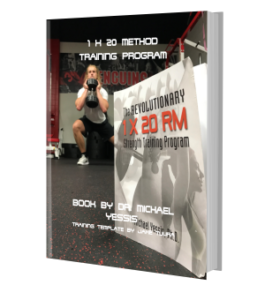https://podcasts.apple.com/us/podcast/jacked-athlete-podcast/id1462537296?i=1000698434316
“Basically we showed shockwave doesn’t work. And that was not good news for a lot of shockwave people. So we and that and it’s, a good, it’s a timely trial because there’s now pretty good evidence in the Achilles insertion that it doesn’t work when you add it to exercise. So when you add exercise and shockwave together, the shockwave adds no nothing at all.”
Shockwave: “Yes, that was the initial thing, breaking up calcium. And that’s when it first started getting used. And it was first used mainly in insertional and calcific tendinopathy… but then there was a drift and people started using it for all types of tendinopathies. And then it started to be used for pain and the mechanism then became, there’s a change in the biochemical environment where stimulating cells, they’re releasing biochemicals…. So you might get a mechanotransduction type effects. So that was where it sort of went afterwards. But if you really look at the plausibility of those arguments, they’re not very strong because we know that the tendon cells are very smart. If you give it lots of repeated compressions with a shockwave, it’s not gonna like that.”
Shockwave: “So whatever mechanotransduction you’re going to get anyway, it’s probably not good.”
Calcification: “People look at it and they think that doesn’t look good. You’ve got this big bone growing into the tendon. Sometimes it looks like a little finger projecting in to the tendons. People get quite worried about that. But I always reassure them that even if they go through treatments, the tendon gets stronger, their muscle gets stronger, they get more tolerant, and the bone will still be there and that’s absolutely fine. And they won’t have any pain at some point, but the bone will still be there.”
Calcification: “Some people will say, I have got this bone in the tendon. And they think that’s the cause or at least part of the cause [of the pain]. And that’s usually been told to them by someone else.”
“These [pathologic tendon] people go back to sport and they still have that same tendon when they go back to sport. It hardly ever does get better. It does get better, but it takes a long time to get better… You might be treating someone, they might get better at six months or 12 months, you look at their tendon at that time, the tendon might be marginally better, but it’s still gonna be really abnormal. But then now and then I’ve seen people back three, four, five years later, they might have another injury and they come back and see me. And I always scan the tendon and then at that point it looks much better. So I think the timeframes for improvement in tissue are really, really long and much longer than what they’re looking at.”
“There are few studies now that are starting to look at those three to five year periods and they’re showing that yes, you can start to see a more normal tendon in that timeframe if you’re looking at that time.”
So you are just done with shockwave? “Done, done, done, done. Yeah. Done. Which is, know, which is a, it’s a real U-turn and roundabout. But I thought, I can’t keep going. I can’t, I can’t keep going.”
PRP: “So we do have lots of good studies now in PRP and particularly in Achilles. So in the Achilles, you can be very certain, given the current evidence that PRP does not outperform a sham injection. So we know that. We know that for sure. There’s no doubt about that. It’s about as certain as you can be with anything that we have.”
Stem cells: “It’s a very compelling narrative and you know, a story sells the injection… if you can sell people, look, these are STEM cells, you know what these can do.”
Passive treatments he’s a fan of: “If it’s accessible, it’s fairly cheap, and it’s safe, those three things, if you can tick those boxes, I don’t think it matters too much what you’re doing.”
Patellar tendon: “It just makes sense that there is compression. It’s an insertional tendon problem. If you look at it with imaging, a lot of the time you’ve got the patella and you’ve got, and people think, and you’ve got the tendon that inserts there, but the tendon goes over the top. So where you get compression is here at the top of the tendon. And you often see a thickening of the tendon as it goes over the patella as well.”
“If you’re talking about tendinopathy as in treating pain and treating self-reported outcomes, then it probably doesn’t matter what type of loading you do. So you could do something that is very, very light load… But when we go to tendon properties and stiffness, then it does matter. I think it matters a lot. That’s where I think we’re trying to stress the tissue enough to get some sort of adaptive response.”
“I think what’s happened is we’ve forgotten about the tissue over the last decade, because everything is about biopsychosocial. It’s about making sure that we’re doing the right education, which I think is really, really important. But it’s also at the expense for some people of the specificity of the loading that is required to get an adaptive response. So I think we need to be conscious that we’re also treating a tissue as well as the person. So we need to look after the person, but also look after the tissue at the same time.”
BPS model for tendon pain: “One of the main ways that people deal with the psychological factors is by giving people confidence to load the tendon. And that comes from the load progressions we do. So giving people the confidence to load the tendon is sort of how you deal with the biopsychosocial part of it.”
“In my practice, I would try and do a combination of both. Loading for the sake of improving their confidence and pain, but also specific loading that is going to have a chance of improving and making the tendon better.”
“If you strain a tendon isometrically, if you hold it at a certain point for a long enough time, you’re also going to get an effect of fluid movement. So one of the things that happens, and it happens with all type of loading, but it particularly happens with isometric loading, is that the fluid starts to move out of the tendon.”
“As well as fluid movement, the tendon becomes more compliant. So the tendon starts to strain more. So you get more fluid movement, more strain. And that’s really important because you’re going to get more of an adaptive response. So in the short term, you get more strain. In the long term, you get a stiffer tendon.”
Stress relaxation: “So as you start to get fluid movement, fluid movement will impact on stress relaxation. And so will sliding of fascicles and other mechanisms as well.”
“Isometrics followed by heavy maximal eccentrics is what I tend to do in the clinical context to try and get maximal adaptation. I don’t really bother with isotonic for adaptation. Isotonic is good for muscle strength, but not so much for getting an adaptive response in tendon.”
“Isotonics is probably the worst way to get, or if you’re really focused on tendon adaptation, it’s probably the least best. Still going to work, but not as well as the other ones.”
“Say you’re doing a hamstring and you’re doing it on a leg curl machine, the weakest points in the length tension curve will be in a shortened position. And that’s going to dictate how much load that person pushes. So that means that, and that’s pretty much why it’s weaker than the isometric option. So isometrics always going to be better.”
Stress relaxation vs. Fluid movement: “If you’ve got someone with a patella tendon, it makes perfect sense because they’ve often got a big hole in their tendon, a big dark hole in their tendon. So you want to relax that stress shielded area and load it. That’s what you want to do. But if you’ve got someone with an Achilles that’s just thick and pretty homogenous, the whole thing looks the same. It doesn’t work that way. It’s a different type of mechanism.”
“From the work of Arampatzis, you can just strain a tendon really heavy. He does three second contractions… So it’s not long, but he gets really good adaptation of the tendon stiffening…. And Keith Barr’s work is different. That’s a higher duration, lower intensity. And that gets good adaptation too.”
“Within the tendon and especially pathological, there’s going to be stacks of fluid in there, stacks of that increased water… So I think there’s also a need for some people to try and just basically try and remove as much as that excess water as possible. And then it’s going to behave more like a normal tendon and that excess water and compression might have some impact on pain as well.”
“I think that if you do a warm up, say you wake up in the morning and you put your foot down and your Achilles is really stiff and you feel really painful, that’s more of a neuromodulation type effect that we’re probably getting there when that starts to warm up and people start to feel better… They’ll go and have a bit of a walk and they’ll feel better. I don’t think that is enough to get fluid movement.”
“What might work a bit better is if we do heavy isometrics rather than the heavy slow resistance to try and wring the water out. Because those mechanisms of the mechanisms of stress relaxation that Keith Barr talks about and the mechanisms of fluid movement are overlapping. So partly once you start to move the water out, you will get stress relaxation. That’s part of it. But it’s also sliding of fascicles as well. So it’s not just related to fluid movement. So what we need to untangle is the best way of maximizing those mechanisms in a pathological tendon.”
“We know that pathological tendons have a real high metabolism. They’ve got a real high metabolic rate compared to healthy ones. So something is happening in these tendons, but obviously it doesn’t go in the right direction.”
“The water in the tendon is serving a purpose. It’s really important. It allows it to be more elastic. And we know that there’s a stack of water in the inter-facicular matrix, which is part of that sort of elasticity of the tendon, especially the Achilles tendon. So, and so this, this water is actually helping that tendon to be more elastic as well. But that’s really useful for when you’re doing sort of ballistic movements, hopping plyometrics. When you want to load a tendon slow, get an adaptive stimulus to those cells, you want to strain the cells and the water going out of the cell is helpful then because it will allow the tendon cells to have more strain stimulus ultimately. And also you get the shear forces from movement of the actual water itself. So it basically, it [the water] just goes out for a short amount of time and then it’s recovered again. So in a normal tendon, you’ll have a movement of fluid out of the tendon. And we showed this with Iman’s work that basically just goes out of the tendon and you get a change in volume. And then the tendon is a lot more compliant. It is able to strain more in that short term.”
“When you slowly load a tendon, some of those bonds break. But when you do it quickly, they don’t. They don’t have time to change biochemically. So they will stay there and the tendon will just have this stiff response to the ballistic loading. And part of that stiffness response is related to the viscous material that’s in the tendon as well. So that will contribute to that stiffness response. And that’s a good thing, because you want the tendon to be stiff when you’re ballistic movements, because it helps to protect the tendon against injury.”
“It also helps it to store energy. So you get some of the storage of energy within those viscous parts. It’s a really important part of it. But yeah, when you’re doing it quick, you just don’t get time for that fluid to disperse as you do when you do slow.”
“The thing with plyometrics is you don’t get as much of those mechanisms we talked about, like the stress relaxation and the fluid movement. You don’t get as much of that. You will get it. And I’m sure there are studies out there showing that you do get it, but not, probably not as much. You do get a lot of strain though, which is interesting.”
“So if you’re doing hopping in the Achilles, you’re gonna get about 8 % strain. If you’re doing a maximal isometric, you’re gonna get about 5% to 8 % strain as well. So it’s quite similar, if not higher. The other difference is the the amount of time the contraction’s held for. So with ballistic movements, obviously it’s like 0.4 of a second when you’re doing hopping, or even lower, 0.2 of a second, 0.3 of a second. But when you’re doing the isometric, you can actually hold it for as long as you want and get that input.”
“There’s not a very good relationship between MVC and tendon strain. So you could do an MVC for someone who’s got a very weak muscle, but a stiff tendon, and you could do it to 80 % and still not achieve a lot of strain because the muscle’s quite weak in comparison to the tendon. It goes the other way as well. You could have someone with a very strong muscle and a very compliant tendon… Now, generally things should be in tune. So most people will have a muscle that’s in tune with the tendon. So you don’t get that a lot, but it is possible. And you see that with some of the data that’s been shown where some people get enough tendon strain to lead to an adaptive response, even with 30 % of MVC or 35%, 40%. And that’s where I think the BFR evidence is coming in. So some people are just able to strain enough at that low level. And a lot of these BFR studies, they’re using people who have got issues like post-surgery or they’re using people who are very untrained. So these untrained people, they’re gonna strain their tendons much more easily.”
Website: https://www.tendinopathyrehab.com
Instagram: https://www.instagram.com/tendinopathyrehab/?hl=en
Twitter: https://x.com/DrPeteMalliaras
Email: peter.malliaras@monash.edu



